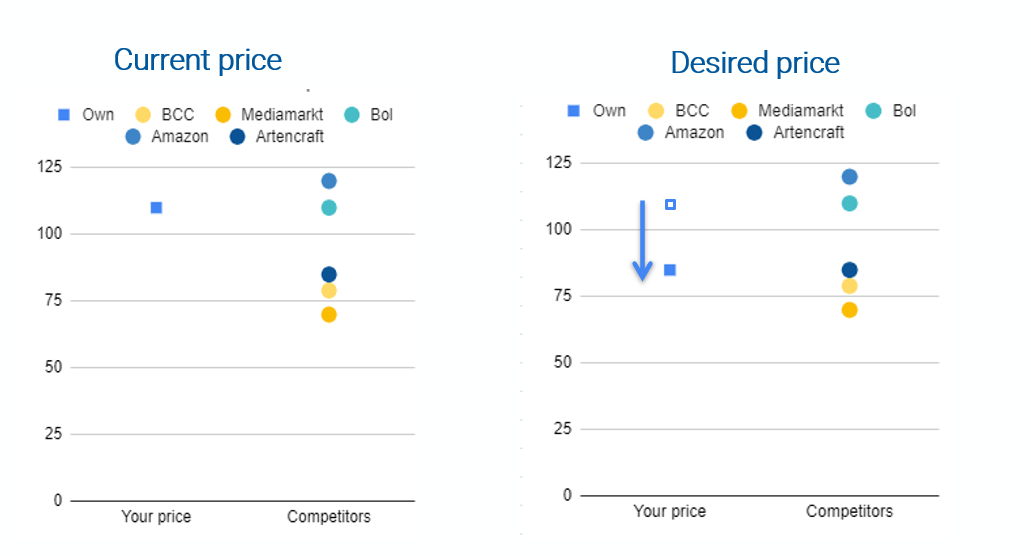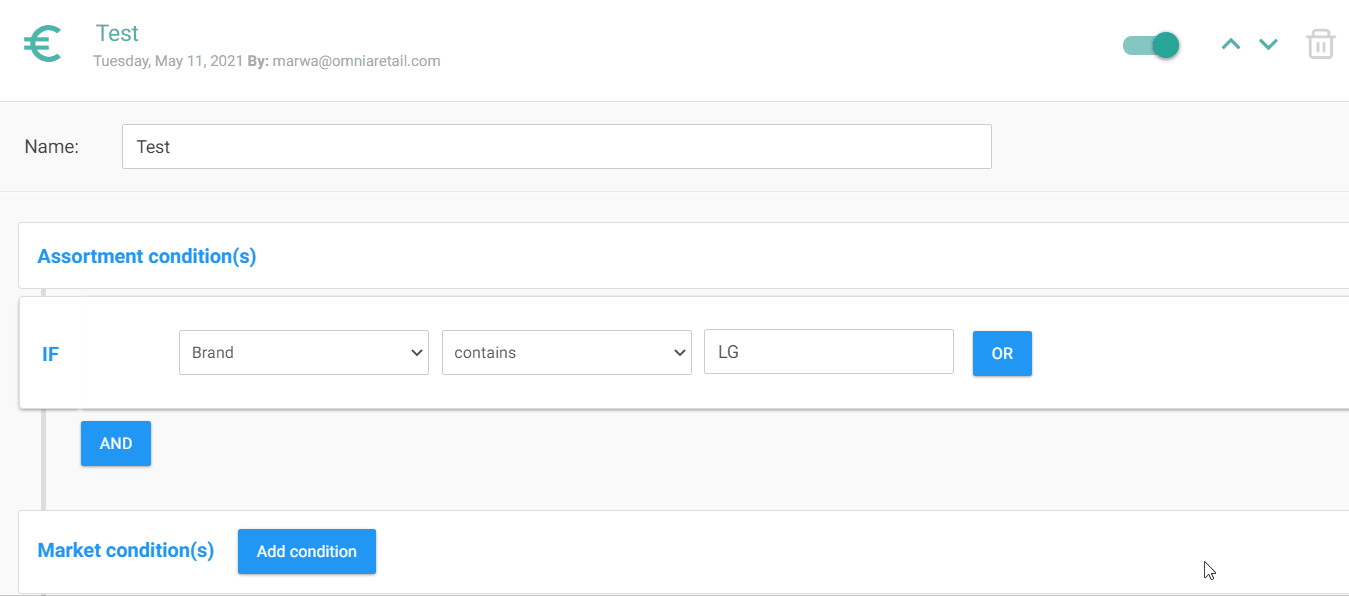We believe that Market Conditions can bring you great added-value in setting up your strategy. Therefore and in order to help you use this feature to its full potential, we came up with some scenarios that will hopefully inspire you to adopt them.
Let’s assume that you are a Dutch retailer in Electronics. You are a premium seller for the brand LG and you want to be competitive for these products. However, you also want to make sure that you maintain a healthy margin for these products.
After going through your pricing strategy preparation and identified two Tier 1 competitors and three Tier 2 competitors:
Tier 1: Amazon / Bol. These two major retailers are your most important competitors and you want to be sure that you always match their prices.
Tier 2: Artencraft, BCC and Mediamarkt. These are important competitors but you believe that being a premium seller of LG allows you to not be aggressive on price changes for these competitors. You only want to follow them if at least two are lowering their prices in order not to disturb the market and bring margins down.

Now that we have established what our aim is, here is how to translate it into a strategy in the portal. Following the Tier 1 products can be done with a regular business rule, but Market Conditions comes in order to implement the second part of the strategy: to only follow your tier 2 competitors if at least 2 have a lower price:
First step: Define the action to be applied
This first part is common to all Omnia strategies, you will have to start with adding an action.
Second step: Adding Market Conditions
This is very similar to implementing any business rule in Omnia. We will be setting the if-statement to only include products that are from the LG brand.

However, you can now go further into your action plan. In this instance, we will ideally need to use two of the Market Conditions templates:
The first one is optional and will exclude Bol and Amazon as we have identified them as your tier 1 competitors. This rule works exactly as an if-statement as it will only apply your desired actions if none of your main competitors are present.
The second template is more malleable and will let you change the variables depending on what you want to achieve. In this case, we will choose to apply this strategy only if at least 2 of competitors BCC, Artencraft, and Mediamarkt are priced 5% lower than your selling price. In this sense, you will be able to select the maximum/minimum number of competitors present as well as how big or small you want the gap between you to be.
Third step:
Lastly, you would want to add the action defined in the first step to your business rule:
With this example, you have now acquired power to include more layers of competitors in your pricing strategy. This truly gives you the opportunity to be more proactive in changes in the market, and become more aware of what your competitors are doing.
If you are interested in more insights and ideas on how to include Market Conditions in your strategy, check out our blog articles on the topic.
